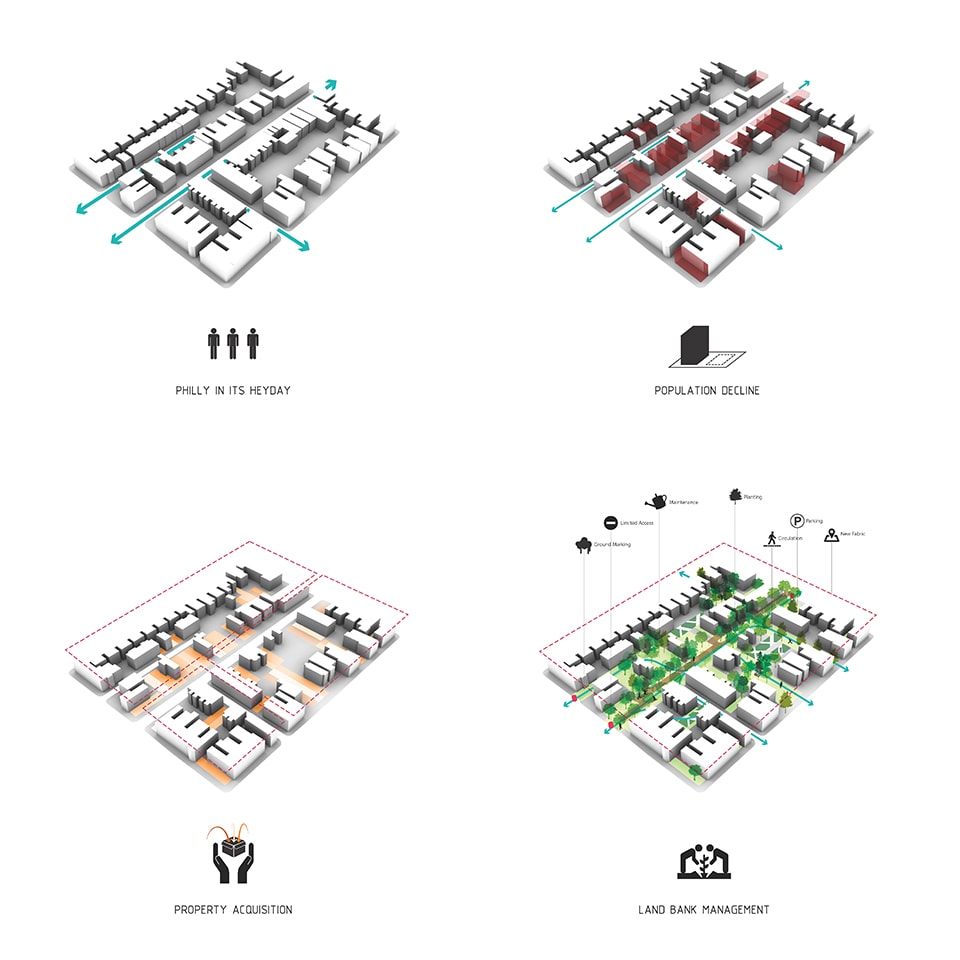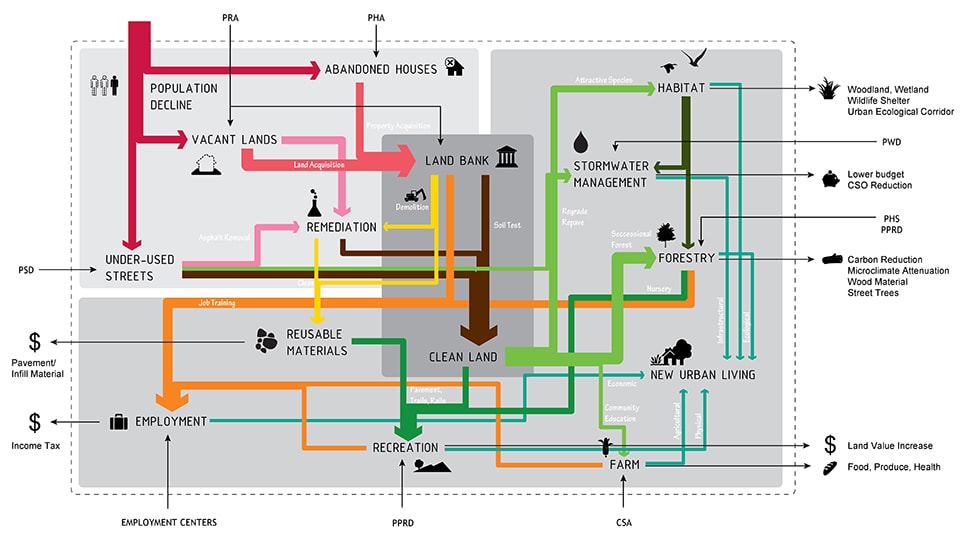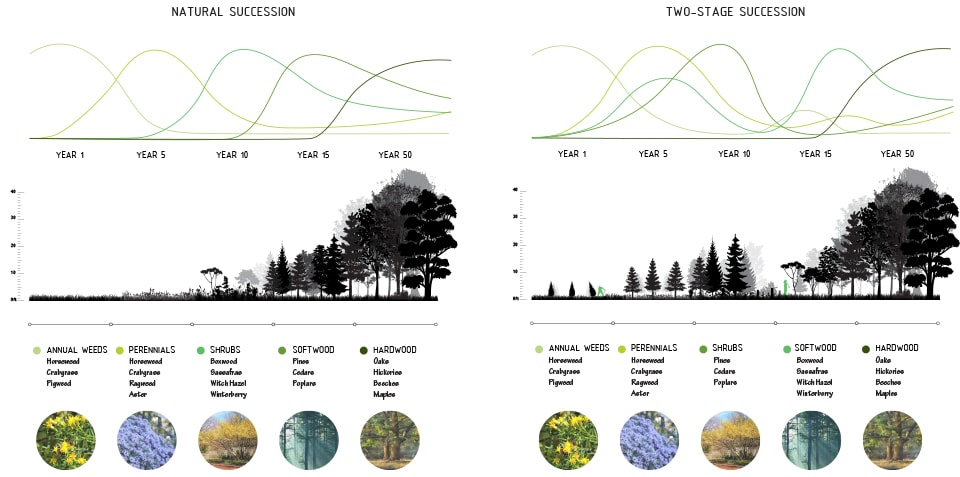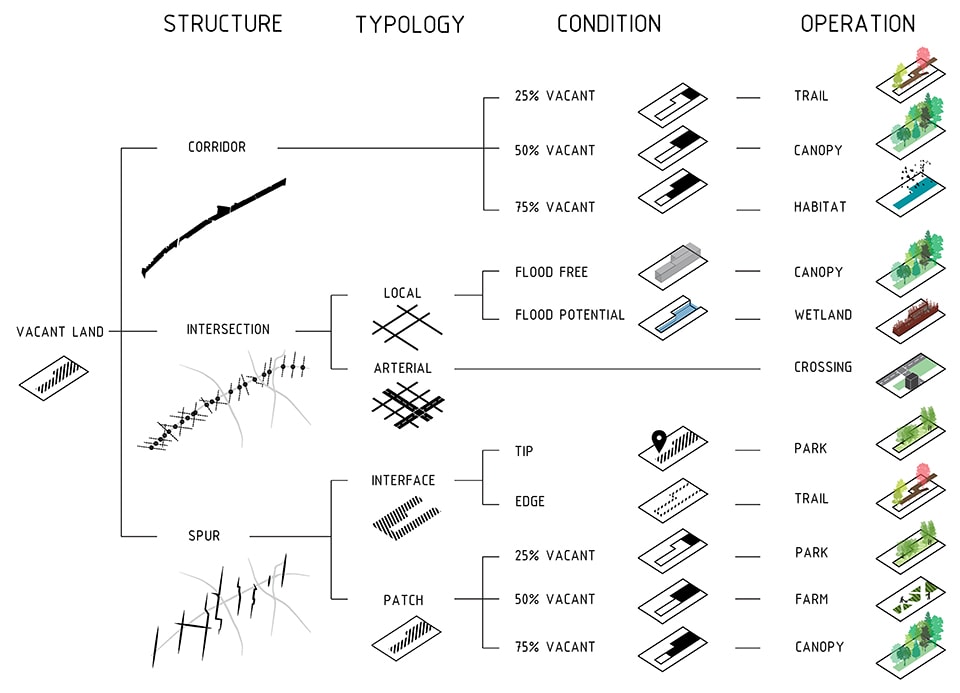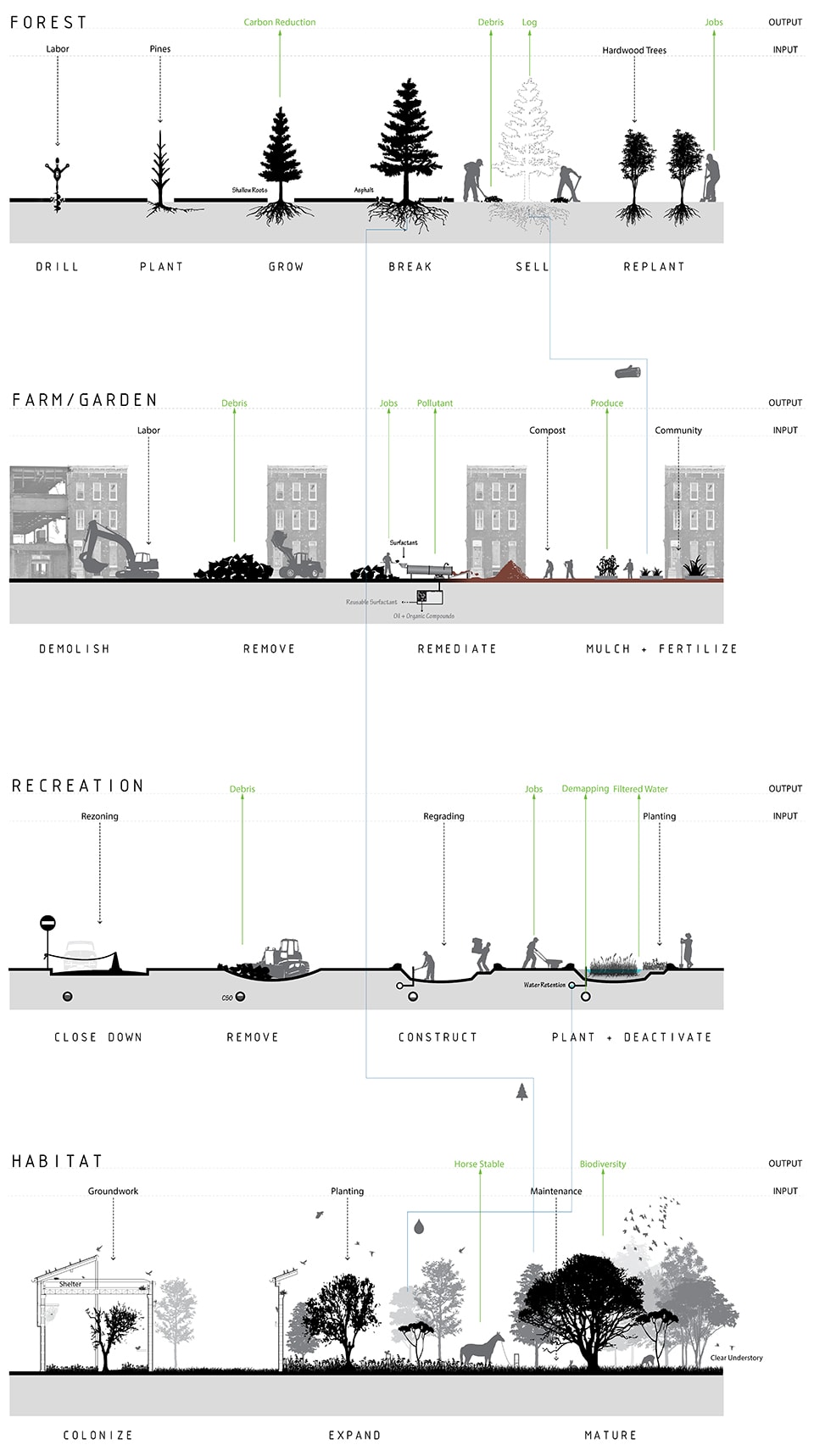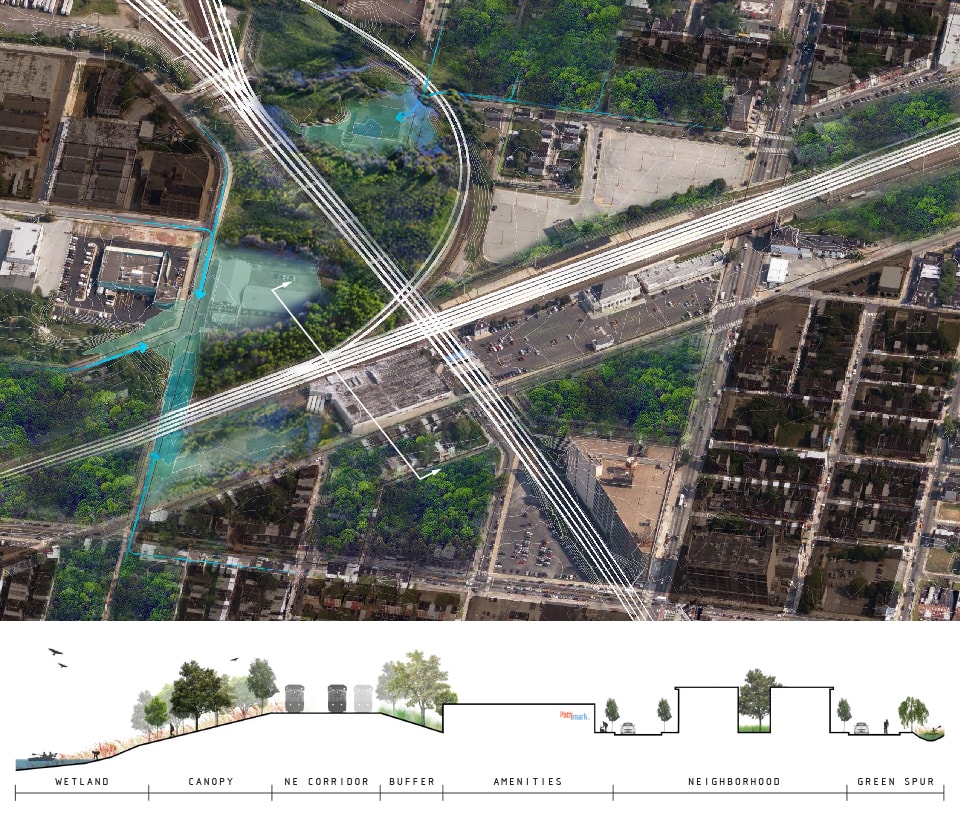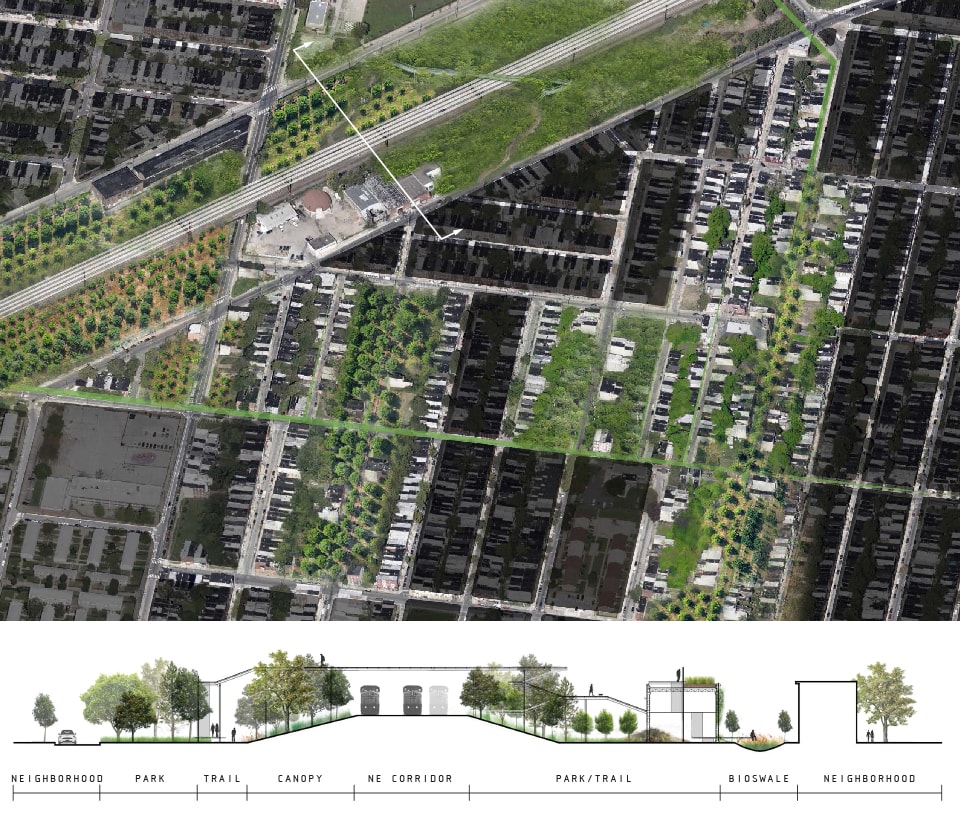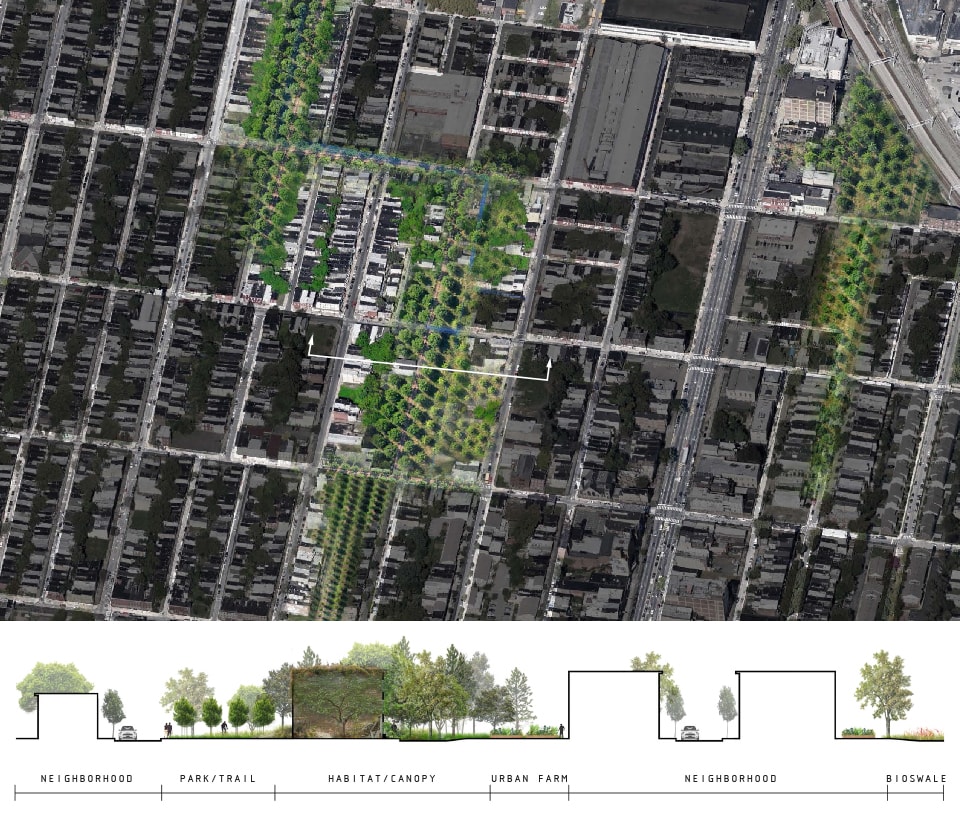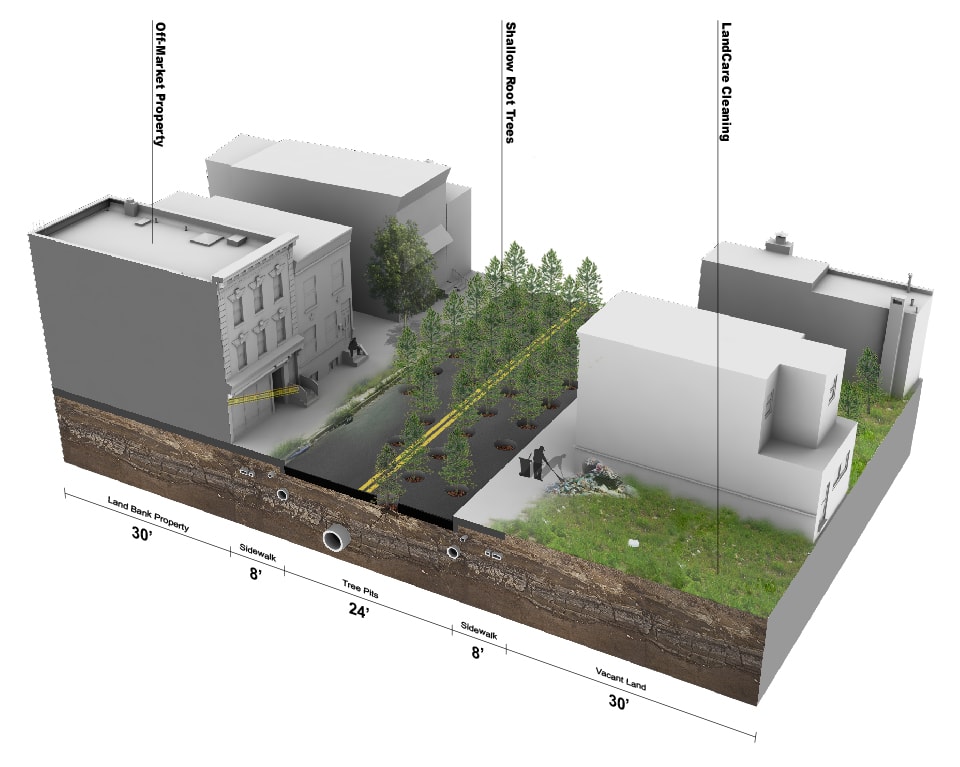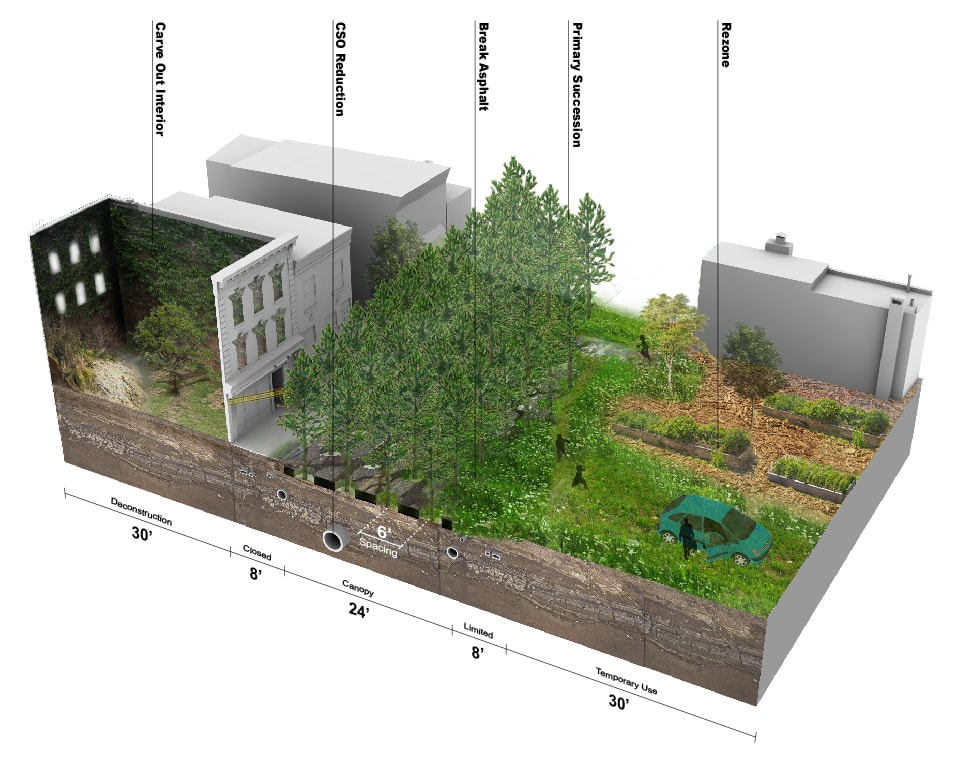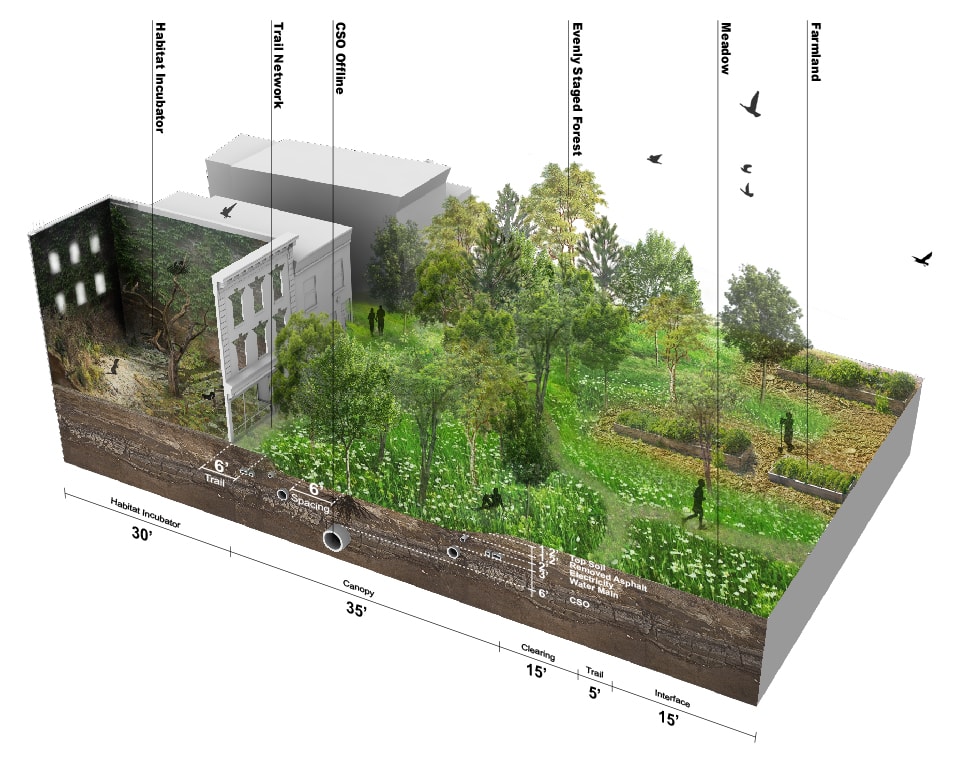Instead of trying to fill up the “black hole” of vacancy, Urban Regeneration: Foresting Vacancy in Philadelphia envisions a different future for the city of Philadelphia — one that not only embraces, but expands vacancy [1]. With the assistance of a proposed Philadelphia Land Bank, the system accumulates and transforms vacant property as well as under-used infrastructure into an adaptive and productive urban forest, not only increasing the biodiversity of the urban environment, but in the long run, also lowering maintenance costs and balancing the real estate market for the city.
Contemporary American cities such as Detroit, Cleveland, and Philadelphia have been struggling with population decline and consequently with the problem of vacancy. Property values in the vacant areas of these cities continue to plunge, while crime rates sky-rocket. Tax delinquent properties turn into city’s burdens instead of revenue sources, and infrastructures become inefficient and redundant. Altogether these issues start snowballing into an irreversible vicious cycle.
Upon acknowledging that there is “more vacant property than can be filled,” [2] the question is no longer “how to fill up the void?” but rather “how to utilize the void?” Under the complex settings, this project proposes a landscape planning and land management strategy that adapts both spatially and economically to a shrinking population.
Land Bank Management Strategy: The Philadelphia Land Bank collects vacant land by taking back tax delinquent property and reassembles lots with various ownerships into larger units for urban forestry.
The project is inspired by the remnants of post-industrial train tracks that formerly stretched into the urban grid. By thickening the Northeast Corridor with robust forests, wetland and habitat patches, a river-to-river connection is established. The urban fabric is also diversified with successional forests, while stormwater is managed locally in acupunctural wetlands, reducing CSO overflows into the Schuylkill River and Delaware River [3]. The system then expands, with spurs growing out from the thickened spine into the city. Along these former under-used streets, active programs like community farms, rain gardens, and linear parks will become the new urban edge that redefines its adjacent neighborhoods. Superimposed on top of these, a bike trail network interconnects the city with its two riverfronts.
In addition to the spatial intervention, a new land bank system is proposed as a tool of land management for the project. Unlike a conventional land bank, the Philadelphia Land Bank is set up not only to acquire and manage vacant property but to take them permanently off the market for urban forestry, allowing the population to concentrate in livable areas. By cutting down the housing supply to match the low demand in the area, a balance in the real estate market will be achieved. Once the physical conditions of the areas have been improved and the market structure been restored, the remaining lands in North Philadelphia can begin to recover in market value.
Urban Forestry System Framework: By taking vacant property off the market, and under-used streets off the grid, an urban forest is grown, the city is resized and reshaped, and a new way of living is introduced to its inhabitants.
Unlike the over-sized Fairmount Park with its large portions of green space hidden deep inside the park, the systematic, growing network of linear urban forests creates a maximum number of green interfaces directly to the urban fabric, stretching nature into the heart of the city. Along these interfaces, new urban lifestyles will emerge: kids biking through the green linear parks to get to school; the community gathering in the urban farm to grow their own fresh produce; couples taking a romantic stroll in the woods after dinner; recycled materials from abandoned factories and rail constructions being used to build low-budget scaffolding bridges, providing easy and scenic access across the railway and the forests.
By strategically accumulating and turning vacancy into an urban forest, the project reorganizes the spatial disruption of the existing fabric. By reshaping the city and its neighborhoods into an economically efficient and manageable size, and reducing service costs by replacing under-used infrastructure with a sustainable landscape, this project aims to redefine the meaning and function of vacancy in the city.
Forest Succession: To grow an urban forest, a two-stage process is proposed. During primary succession, shallow-rooted trees such as pines are planted to break apart existing built surfaces and loosen the soil underneath, before being culled. In the secondary succession, a hardwood forest along with shrubs as sub-canopy begins to establish a more robust and diverse environment.
Operation Typology: According to the different spatial conditions of each vacant lot, a diverse menu of landscape operations is prepared. Collectively, they to transform and integrate the site into a part of a larger, robust growing structure.
Process of Making: Through a series of interwoven operations, inputs of energy, material, and planting, vacant lots and underused streets yield in a host of beneficial products and services, ultimately resulting in a remediated, replanted, and expanded interactive and productive urban forest for the city.
A thickened forest band, separating the rail line from the city, is nurtured both as a buffer zone and as a habitat corridor to the city.
Vehicular and pedestrian access to enclosed areas is established; cross-connections are created utilizing adjacent post-industrial structures and materials, linking both sides of the corridor.
Green spurs are extended into the neighborhoods. Linear parks, urban farms, and bike trails work as the active interface between forested areas and the urban fabric.
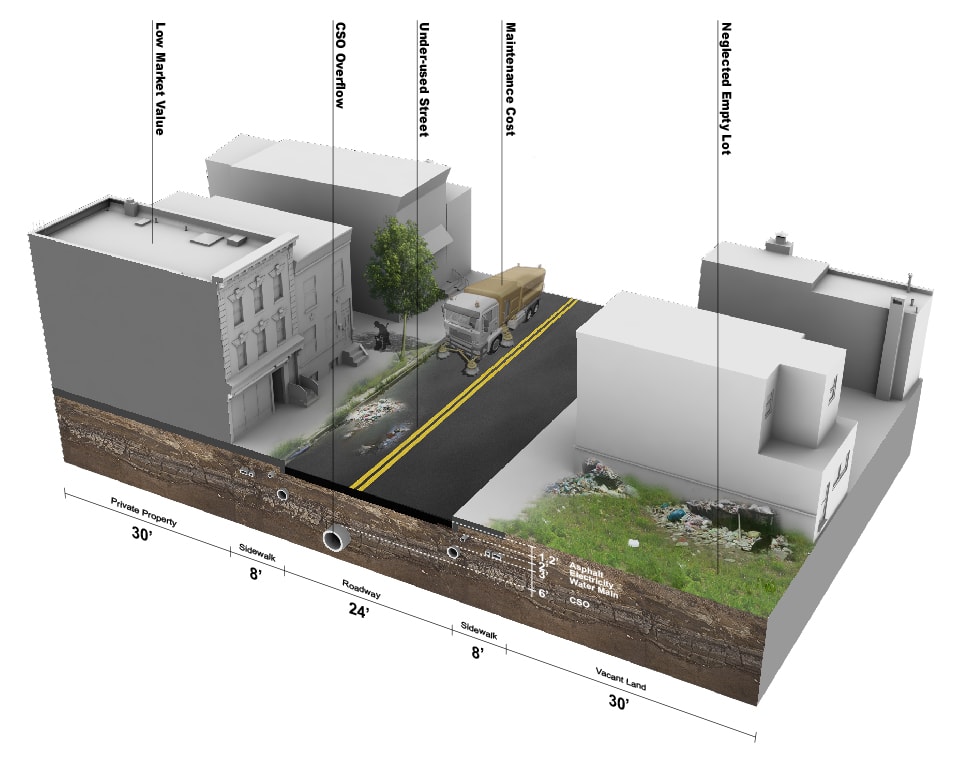
Year 1: An under-used street with vacant land and buildings. The city still pays to provide services.
Year 5: The vacant property and the empty street are taken offline and start the process of primary succession with fast-growing, shallow-rooted pine trees.
Year 15: Towards the end of the primary succession, the pine trees have broken apart the road structure and prepared the soil for the secondary succession. Adjacent lots are turned to productive programs such as nurseries or community farming.
Year 50: As the secondary succession matures, the interface transitions from forest to clearing/farm to park to urban fabric. The trail network crosses through these adaptive landscapes and links them to the rest of the city.
 Chieh Huang is a Master of Landscape Architecture candidate at the University of Pennsylvania School of Design. Before joining PennDesign, he finished his Bachelor Degree in Urban Planning at National Cheng Kung University in Taiwan. His research is focused on how landscape interventions serve not only as public spaces and ecological habitats in the city, but also as a new type of urban infrastructure and land management. Unlike conventional urban planning predicated on expansion, his work provides an alternative vision for the future of blighted cities, embracing nature into the heart of the city.
Chieh Huang is a Master of Landscape Architecture candidate at the University of Pennsylvania School of Design. Before joining PennDesign, he finished his Bachelor Degree in Urban Planning at National Cheng Kung University in Taiwan. His research is focused on how landscape interventions serve not only as public spaces and ecological habitats in the city, but also as a new type of urban infrastructure and land management. Unlike conventional urban planning predicated on expansion, his work provides an alternative vision for the future of blighted cities, embracing nature into the heart of the city.
Notes

